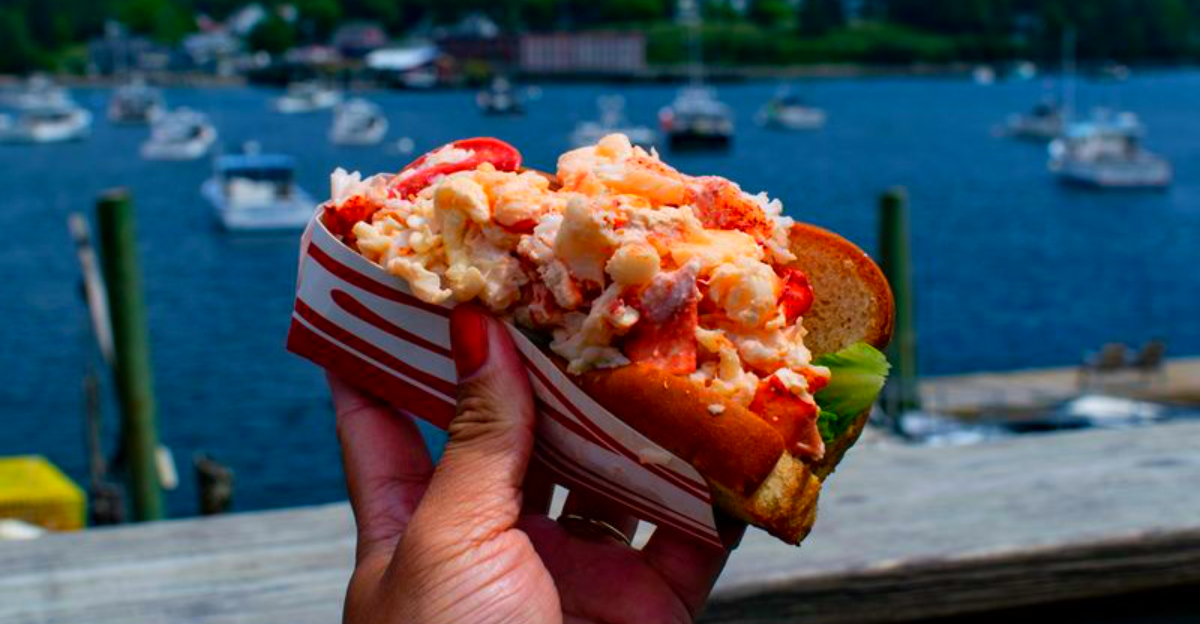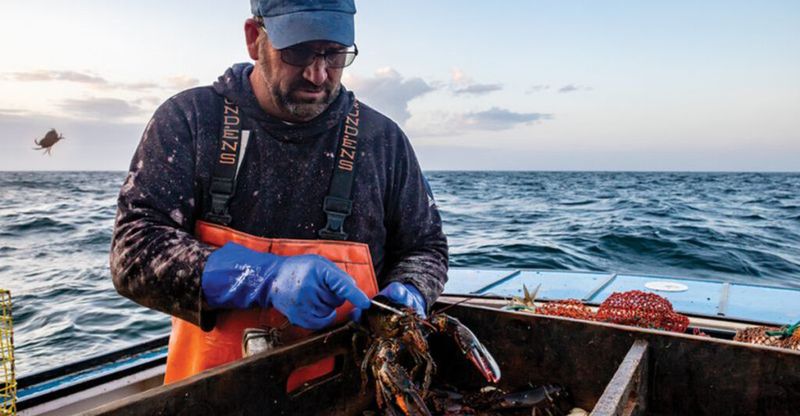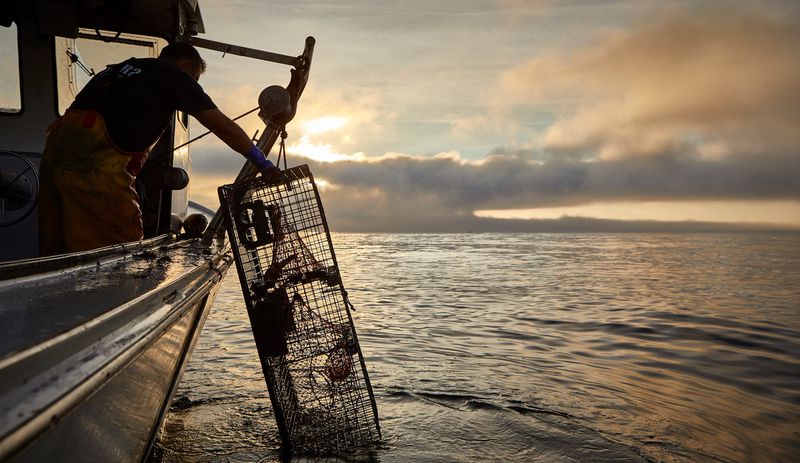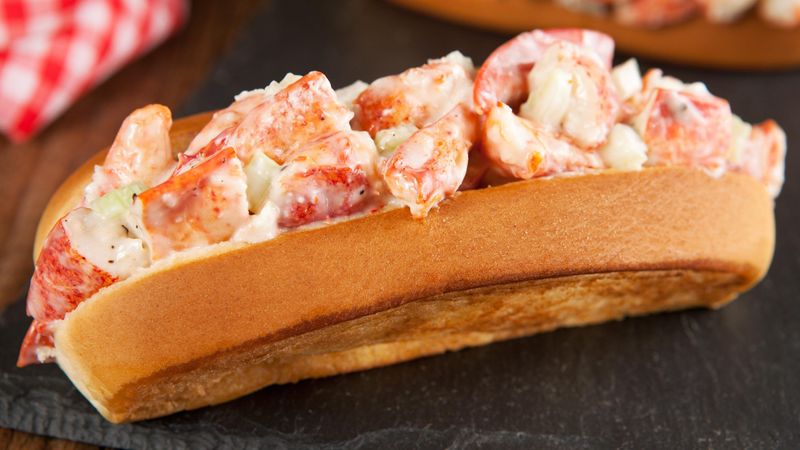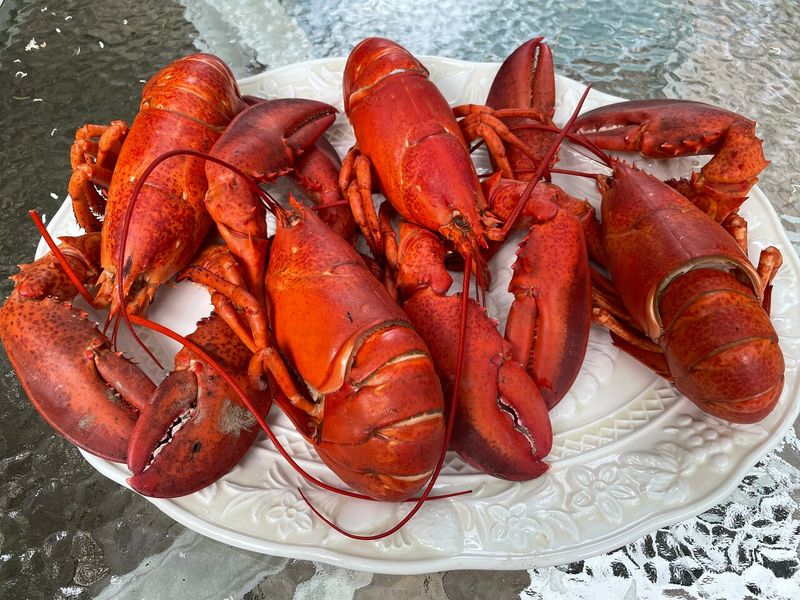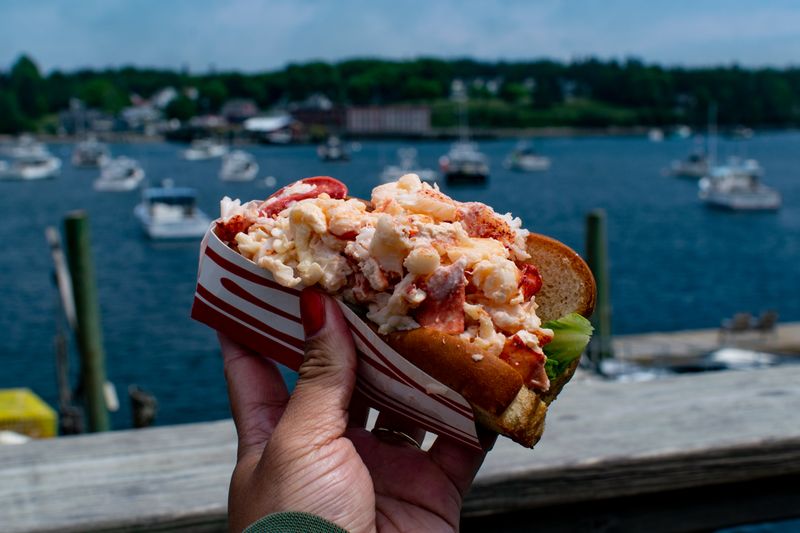Maine is a state obsessed with lobster. Every coastal shack and roadside stand claims to have the best roll, the most authentic roll, the one that defines the Maine experience. But in a little harbor town called Stonington, perched on the edge of Deer Isle, you’ll find lobster rolls that don’t just satisfy – they wreck you. After one bite, every other lobster roll in America will feel like a pale imitation.
1. This Town Lands More Lobster Than Most of the U.S. Combined
Stonington is tiny – barely more than a cluster of weathered houses, working docks, and folks who live and die by the tides. But don’t let the size fool you: this town lands more lobster than just about anywhere else in the country. The lobster you’re eating isn’t “fresh” by the PR definition – it’s the actual definition. Pulled from the water, hauled onto a boat, and onto your bun in the span of hours. You taste the cold Atlantic in every bite. Here, the lobster is as much a part of life as breathing. The dedication of the fishermen is palpable, their commitment reflected in every succulent bite. A visit to Stonington is like stepping into a vibrant painting of coastal life.
2. Families Who Fish by Dawn, Feed by Noon
Here, the people serving you lunch probably know the name of the person who pulled the trap. Hell, it might be their cousin, brother, or even themselves. These aren’t corporate kitchens or polished seafood restaurants – they’re family operations where fishing and cooking blur together. The line between boat and bun is so thin, you feel like you’re part of the process. And you are. This interwoven lifestyle creates a unique culinary tapestry, where personal history meets maritime tradition. Every meal is a story, every bite a testament to generational dedication. The sense of community is palpable, making you not just a visitor but a cherished guest.
3. The Great Divide: Mayo or Butter
In Stonington, the lobster roll wars don’t rage – they simmer quietly, like an old family argument that never quite dies. Do you want it cold, with just enough mayo to hold the claw meat together? Or hot, drizzled with butter that soaks into the bun? There’s no third option, no fusion experiment, no “elevated take.” You pick a side and commit. Either way, you’ll walk away changed. The town’s culinary purity is a refreshing departure from modern gastronomic trends, offering a sincere homage to tradition. Choosing your side becomes a rite of passage, a way to connect with the town’s enduring legacy.
4. Market Price Means Dockside Math
Tourist towns will charge you thirty bucks because they can. In Stonington, the price of a lobster roll isn’t set by marketing teams – it’s dictated by the day’s catch. The cost reflects the tide, the traps, the season, the fuel that got the boat back to shore. When you hand over your cash, you’re not buying an overpriced novelty – you’re buying a share in the town’s heartbeat. This intimate connection to the sea ensures that each roll you eat is a testament to the day’s labor. It’s a fair trade, a mutual respect for the ocean’s bounty and the lives dedicated to harvesting it.
5. No Neon Signs, Just Lobster Rolls on a Splintered Dock
If you’re looking for branding, logos, or “Instagram-worthy” setups, turn back now. Stonington’s lobster rolls are handed over on paper plates at picnic tables or eaten standing against a railing as the harbor breeze whips through. The bun is nothing special – just toasted white bread, barely there to keep the lobster meat from falling apart. Here, it’s about authenticity. The lobster doesn’t need props. It doesn’t need garnish. It doesn’t need approval. It’s simply there, in all its sweet, briny glory, daring you to find a better bite. The simplicity of the setting allows the flavors to shine, offering an experience that is profoundly honest and refreshingly humble.
6. A Village That Lives and Breathes Lobster
Walk down Main Street and you’ll pass stacks of neon-colored traps, ropes coiled like sleeping snakes, barrels reeking of bait. Stonington isn’t a postcard town – it’s a working one. Eating a lobster roll here isn’t just about taste – it’s about geography, economy, survival. You’re not just eating food – you’re eating the town itself, the sea that feeds it, and the lives tied to it. The genuine atmosphere envelops you, making each step a journey through a living, breathing community. The sights and sounds of daily life are a constant reminder of the town’s dependence on the sea, a dynamic cycle of sustenance and survival.
7. The View That Stays With You Longer Than the Roll
Picture this: you’re sitting on a weathered bench, tearing into your lobster roll, butter dripping onto your hands, while lobster boats return one by one to the harbor. The sun hits the water just right, and gulls circle overhead waiting for scraps. This isn’t fine dining – it’s elemental. The view, the salt air, the working harbor – they embed themselves in your memory. Years later, you’ll still taste it. The experience transcends the culinary, becoming a holistic immersion into the essence of Stonington. Every sensory detail combines to create an indelible memory, a snapshot of maritime life captured in your mind forever.
8. Harder to Get To, Impossible to Forget
Stonington isn’t a quick detour. You drive across Deer Isle, down winding roads, over a narrow bridge that feels like a dare. Tour buses don’t come here. That’s the point. This isn’t a place built for visitors – it’s a place that happens to allow them. When you finally arrive and take that first bite, you’ll know why you made the trip. And you’ll know you’ll never look at another lobster roll the same way again. The journey itself becomes a narrative, an adventure through Maine’s rugged beauty, culminating in an unforgettable culinary epiphany. Stonington lingers, haunting your taste buds long after you’ve left.
